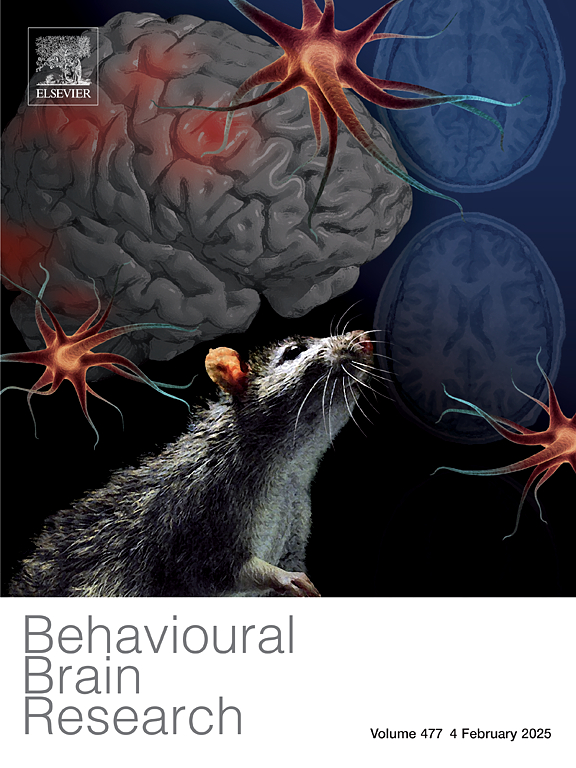青少年女性身体形象相关网络欺凌的神经基础:一个拟议的神经生物学模型。
IF 2.3
3区 心理学
Q2 BEHAVIORAL SCIENCES
引用次数: 0
摘要
背景:社交媒体的广泛使用加速了网络欺凌的增加。与身体形象相关的网络欺凌(BRC)在青春期女性中尤为普遍,并与可能导致饮食失调的负面身体形象结果有关。尽管研究已经开始解决BRC的患病率及其相关的心理影响,但在了解青春期女性对BRC的特定神经生物学反应方面仍然存在重大差距。本文提出了一个与身体形象相关的网络欺凌神经生物学模型(BRCNM),该模型可用于研究青春期女性对BRC反应的神经基础。方法:从神经影像学研究,特别是身体形象和同伴受害的功能磁共振成像(fMRI)研究中,BRC- nm详细描述了BRC经历中神经、心理和社会因素之间复杂的相互作用。结果:BRC- nm描述了青春期女性观看BRC的情绪和认知加工过程中涉及情绪调节、自我参照思维和社会认知的几个关键脑区。结论:通过整合现有知识并建立心理学和神经生物学等跨学科的联系,BRC-NM有助于神经生物学研究领域的发展,增强我们对网络欺凌影响的理解,并支持有针对性的干预措施的发展。本文章由计算机程序翻译,如有差异,请以英文原文为准。
The neural underpinnings of body image-related cyberbullying in adolescent females: A proposed neurobiological model
Background
The widespread adoption of social media has precipitated an increase in cyberbullying. Body image-related cyberbullying (BRC)- which targets an individuals body shape, weight or size -is particularly prevalent among adolescent females, and is associated with negative body image outcomes and eating disorder symptoms. Although research has begun to address the prevalence and psychological impacts of BRC, a significant gap remains in our understanding of the specific neurobiological responses of adolescent females to BRC. This paper presents the body image-related cyberbullying neurobiological model (BRC-NM), which can be used as a framework to investigate the neural underpinnings of adolescent females’ responses to BRC.
Method
Drawing from functional magnetic resonance imaging (fMRI) studies of body image and peer victimisation, the BRC-NM details the complex interactions among neural, psychological, and social factors likely involved in experiences of BRC.
Results
The BRC-NM delineated several key brain regions involved in emotional regulation, self-referential thought, and social cognition that are proposed to be involved in the emotional and cognitive processing of viewing BRC.
Conclusion
By integrating existing knowledge and establishing connections across disciplines such as psychology and neurobiology, the BRC-NM contributes to the evolving field of neurobiological research, enhancing our understanding of the impact of BRC and supporting the development of targeted interventions.
求助全文
通过发布文献求助,成功后即可免费获取论文全文。
去求助
来源期刊

Behavioural Brain Research
医学-行为科学
CiteScore
5.60
自引率
0.00%
发文量
383
审稿时长
61 days
期刊介绍:
Behavioural Brain Research is an international, interdisciplinary journal dedicated to the publication of articles in the field of behavioural neuroscience, broadly defined. Contributions from the entire range of disciplines that comprise the neurosciences, behavioural sciences or cognitive sciences are appropriate, as long as the goal is to delineate the neural mechanisms underlying behaviour. Thus, studies may range from neurophysiological, neuroanatomical, neurochemical or neuropharmacological analysis of brain-behaviour relations, including the use of molecular genetic or behavioural genetic approaches, to studies that involve the use of brain imaging techniques, to neuroethological studies. Reports of original research, of major methodological advances, or of novel conceptual approaches are all encouraged. The journal will also consider critical reviews on selected topics.
 求助内容:
求助内容: 应助结果提醒方式:
应助结果提醒方式:


